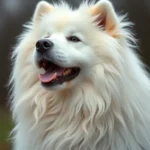
Understanding dog breeds is essential for anyone considering bringing a canine companion into their home. Dog breeds are distinct groups of dogs that have been selectively bred for specific traits, appearances, and behaviors. This classification helps potential dog owners choose a breed that aligns with their lifestyle, preferences, and needs. Among the diverse array of breeds, the black and white French Bulldog stands out for its unique charm and personality.
Understanding Dog Breeds
Classification of Dog Breeds
Dog breeds are categorized into groups based on their purpose, temperament, and physical attributes. Common classifications include working breeds, herding breeds, toy breeds, hounds, and terriers. Understanding these classifications is vital for prospective pet owners, as it ensures that they select a breed that fits their living situation and lifestyle.
For example, working breeds like the Siberian Husky require ample exercise and space, while toy breeds like the Chihuahua can thrive in smaller living quarters. Knowledge of breed classifications aids in responsible pet ownership and helps prevent potential compatibility issues.
History of Dog Breeds
The history of dog breeds is a fascinating journey through time. Dogs have been companions to humans for thousands of years, and through selective breeding, specific traits have been enhanced to create the breeds we recognize today. This evolution has led to the development of breeds suited for various tasks, from herding livestock to providing companionship.
The French Bulldog, for instance, evolved in the 1800s in Nottingham, England, as a smaller version of the English Bulldog. It eventually gained popularity in France, leading to its current name and distinct characteristics. Understanding the history of a breed allows owners to appreciate their dog’s lineage and behavioral traits.
Importance of Choosing the Right Breed
When selecting a dog breed, potential owners should consider several factors, including their living situation, activity level, and family dynamics. Each breed has its own set of characteristics, and understanding these traits can lead to a more harmonious relationship between the owner and their pet.
For example, the black and white French Bulldog is known for its affectionate nature and adaptability, making it an excellent choice for families or individuals living in apartments. By aligning breed characteristics with personal lifestyle, owners can ensure a fulfilling companionship.
The Black and White French Bulldog
Overview of the French Bulldog
The black and white French Bulldog is a captivating variation of the beloved French Bulldog breed. Renowned for its compact size, distinctive bat-like ears, and playful disposition, this breed has gained immense popularity over the years. French Bulldogs are known for their friendly demeanor and adaptability, making them ideal companions for various households.
Physical Characteristics
French Bulldogs are small, muscular dogs with a sturdy build. Typically, they weigh between 16 to 28 pounds and stand about 11 to 12 inches tall at the shoulder. The black and white coloration of this breed is striking, with a blend of glossy black and crisp white fur that enhances their overall appeal. Notable physical features also include their short snouts and expressive eyes, which contribute to their endearing appearance.
Despite their adorable looks, it’s essential to be aware of common health issues associated with French Bulldogs. Due to their brachycephalic (short-snouted) structure, they can experience breathing difficulties, especially in hot or humid conditions. Regular veterinary check-ups and awareness of their health needs are crucial for maintaining their well-being.
Temperament and Behavior
The temperament of the black and white French Bulldog is one of its most appealing qualities. These dogs are known for being affectionate, friendly, and playful. They typically get along well with families, children, and other pets, making them an excellent choice for a household environment.
Socialization is key with this breed. Early exposure to various people, animals, and environments helps develop a well-rounded dog. While they are generally eager to please, they can be a bit stubborn during training sessions. Employing positive reinforcement techniques, such as treats and praise, can enhance their learning experience.
Care and Maintenance of Black and White French Bulldogs
Nutrition and Diet
A balanced diet is essential for maintaining the health of your black and white French Bulldog. High-quality dog food formulated for small breeds ensures they receive the necessary nutrients. It’s important to monitor their weight, as French Bulldogs are prone to obesity. Consult with a veterinarian to determine the best diet based on their age, activity level, and specific health needs.
Grooming Requirements
Grooming a black and white French Bulldog is relatively straightforward due to their short coat. Regular brushing helps remove loose hair and minimize shedding. Bathing should be done as needed, taking care not to over-bathe, as this can strip their skin of natural oils.
Ear care is also crucial, as French Bulldogs are prone to ear infections. Regular checking and cleaning of their ears can prevent potential issues. Additionally, dental care should not be overlooked; regular brushing and dental chews can help maintain good oral hygiene.
Exercise Needs
Despite their small size, French Bulldogs require regular exercise to stay healthy and happy. Daily walks, playtime, and interactive toys can help them burn off excess energy. However, due to their brachycephalic nature, it’s essential to avoid strenuous activities in extreme temperatures. Keeping exercise sessions moderate and fun will contribute positively to their overall health.
Health Considerations
French Bulldogs, including the black and white variation, are prone to certain health issues, such as hip dysplasia, allergies, and respiratory problems. Preventative care, including regular veterinary visits, vaccinations, and awareness of any changes in behavior or health, is vital. Being proactive about their health can lead to a longer, happier life for your furry friend.
Training a Black and White French Bulldog
Basic Training Techniques
Training is a crucial aspect of owning a black and white French Bulldog. Starting early with basic obedience training and socialization helps establish good behaviors and strengthens the bond between dog and owner. Techniques such as positive reinforcement, clicker training, and consistency yield the best results.
Socialization is equally important. Introducing your French Bulldog to new people, pets, and environments helps them become well-adjusted adults. Puppy classes can be an excellent way to achieve this while also providing valuable training for both the dog and the owner.
Addressing Behavioral Issues
While French Bulldogs are known for their friendly demeanor, they can develop behavioral issues if not properly trained or socialized. Common problems include stubbornness, excessive barking, and separation anxiety. Consistent training, clear boundaries, and ample mental stimulation can help address these issues.
If behavioral problems persist, seeking the guidance of a professional dog trainer can provide additional support and strategies tailored to your dog’s specific needs.
Advanced Training and Activities
Once your black and white French Bulldog has mastered basic commands, consider introducing advanced training techniques or activities. Engaging them in agility courses, obedience classes, or even fun dog sports can provide mental and physical stimulation. These activities not only enhance their skills but also strengthen the bond between you and your dog.
Additionally, incorporating puzzle toys and interactive games at home can keep their minds sharp and prevent boredom-related behaviors. A well-stimulated dog is a happy dog!
Living with a Black and White French Bulldog
Environment and Living Space
French Bulldogs adapt well to various living conditions, making them suitable for apartment dwellers and homeowners alike. However, it’s important to create a comfortable and safe living environment for your black and white French Bulldog. Ensure they have a designated space for sleeping, playtime, and relaxation.
Socialization and Interaction
Socialization is a crucial part of living with a French Bulldog. Regular interactions with other dogs and people foster a friendly temperament and help reduce anxiety or fear-based behaviors. Organizing playdates, attending dog parks, or joining dog clubs can provide ample opportunities for socialization.
Travel Considerations
Traveling with a black and white French Bulldog can be an enjoyable experience if you plan ahead. Ensure your dog is comfortable and secure in a well-ventilated crate or travel carrier. Bring along their favorite toys and bedding to provide a sense of familiarity, and always keep fresh water available.
When traveling by car, make frequent stops for bathroom breaks and exercise. If flying, check with the airline regarding their pet policies, as brachycephalic breeds like French Bulldogs may have specific travel restrictions due to their breathing difficulties.
Conclusion
The black and white French Bulldog is a charming and adaptable breed that makes a wonderful companion for many households. Their unique physical characteristics, combined with their affectionate temperament, make them a popular choice among dog lovers. Understanding their care, training needs, and health considerations is vital for responsible ownership.
As you consider the joys and responsibilities of owning a French Bulldog, remember that each dog is an individual with its own personality and needs. By embracing the characteristics of this breed, you can create a fulfilling and loving relationship that lasts a lifetime.









